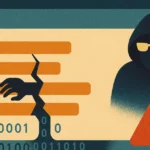Insider threats are becoming an increasingly costly challenge for organizations worldwide. According to the “2022 Cost of Insider Threats: Global Report” published by Proofpoint, insider threats have surged by 44% over the last two years. More alarmingly, the financial repercussions of these incidents have intensified, with the average cost per incident now exceeding $15.38 million—a significant increase of over a third compared to previous figures. Understanding the different types of insider threats is crucial for developing effective defenses.
What Are the Types of Insider Threats?
Insider threats encompass a range of security risks posed by individuals with access to an organization’s internal resources, such as employees, contractors, or business partners. These individuals can misuse their access privileges to either intentionally or unintentionally cause harm to the organization. Insider threats can jeopardize the confidentiality, integrity, and availability of critical data and infrastructure through malicious intent, negligence, or even accidental misuse of information and systems.
Malicious Insiders
Malicious insider threats intentionally misuse authorized access to cause harm to the organization. Unlike negligent or accidental insiders who may inadvertently cause harm, malicious insiders purposefully exploit their insider knowledge and access for detrimental purposes. These individuals often have a deep understanding of the organization’s systems and processes, enabling them to execute attacks that can be particularly damaging. Their motivations vary widely, including financial gain, revenge against their employer, dissatisfaction with their job, or external influences like bribery.
Malicious insiders pose direct threats to the organization, including intellectual property theft, sabotage, fraud, and espionage. They might steal sensitive company secrets to sell to a competitor or to start their ventures. Others may sabotage operations to damage the company’s reputation or create operational chaos. At the same time, some engage in manipulating data or financial systems to benefit financially or harm the organization’s financial standing. While others favor espionage, which involves passing sensitive or classified information to external entities or foreign governments.
Malicious insiders’ behavior can often present warning signs that, if detected early, can help prevent serious security incidents. These signs include sudden changes in behavior, such as displaying apparent dissatisfaction, disagreeing frequently with company policies, or showing an unusual interest in information irrelevant to their roles. Monitoring these behavioral indicators is essential, as they provide the first clues of a potential threat from within.
Negligent Insiders
Negligent insiders are an often overlooked risk to organizational security, primarily due to their carelessness and lack of awareness regarding security policies and practices. Unlike their malicious counterparts, negligent insiders do not have the intent to harm their organization. However, their actions, driven by oversight or ignorance, can inadvertently lead to severe consequences such as data breaches or critical system failures.
Negligent behaviors present unique challenges to security teams. These users are often susceptible to phishing through deceptive emails that can lead to compromised accounts. They may also mismanage credentials, such as using weak passwords or sharing them imprudently. Negligent behavior may also accidentally expose data—such as using personal SaaS solutions for data storage or sharing unsanitized files with partners, often resulting in data leaks. Similarly, they may use unauthorized devices or applications to access or store company data, leading to unintended disclosures.
Negligent insiders typically lack security awareness, which may manifest in risky behaviors. For example, these employees might fail to apply critical updates or patches to software, leaving systems susceptible to known vulnerabilities. Other common mistakes include misconfigured system settings, careless handling or storage of sensitive information, and improper disposal of data-bearing devices, which can all provide easy targets for external attackers.
Infiltrators
Infiltrators masquerade as legitimate insiders while being external entities with unauthorized access. This unique threat combines a legitimate employee’s insider access with an external attacker’s malicious intent. They often gain access through various methods such as stolen credentials, sophisticated social engineering tactics, or by exploiting security vulnerabilities. Once inside, they masquerade as legitimate users, making it challenging to detect their unauthorized activities.
Infiltrator actions typically include corporate espionage, data breaches, sabotage, and conducting advanced persistent threats (APTs). By stealing sensitive corporate information like trade secrets or strategic plans, infiltrators can provide valuable intelligence to competitors or foreign entities. Data breaches involving infiltrators extract large volumes of sensitive information, which can be used for financial gain or to gain a competitive edge. They may also conduct sabotage to deliberately harm an organization’s data integrity or availability, potentially crippling business operations. Most advanced infiltrators may engage in APTs, executing complex, targeted attacks designed to remain undetected for extended periods.
The characteristics of infiltrators include their ability to mimic legitimate user behaviors and maintain long-term access within an organization’s network. This sustained access allows them to gather information gradually and wait for the most opportune moments to act, thereby maximizing the impact of their malicious activities.
Accidental Insiders
Accidental insiders, much like negligent insiders, lack any malicious intent yet inadvertently cause security incidents or data breaches within their organization. These individuals typically commit errors due to a lack of awareness about the security implications of their actions, leading to severe consequences that can be as detrimental as those caused by deliberate attacks. The most common mistakes made by accidental insiders include mismanagement of sensitive data, such as sending information to the wrong recipient, failing to follow established security procedures or handling data inappropriately.
The types of threats posed by accidental insiders are varied but generally involve scenarios that expose the organization to potential data loss or breaches. Data leakage can occur through simple actions like sending emails to incorrect recipients or inadvertently posting private data on public forums. Misconfiguration of systems or software by untrained or unaware employees can create security vulnerabilities that external attackers might exploit.
Collusive Insiders
Collusive insiders involve internal members of an organization actively collaborating with external parties. These individuals engage in partnerships designed to conduct illicit activities such as fraud, theft, sabotage, or espionage. The collaboration between insiders and external entities like competitors, criminals, or even foreign actors magnifies the potential damage far beyond what individual insiders could achieve alone.
The activities of collusive insiders can vary widely, but they often include corporate espionage, where insiders share trade secrets or proprietary information with external parties. These attacks frequently result in financial fraud, such as embezzlement or manipulation of financial records. Alternatively, these threats may focus on sabotage, working to disrupt operations, damaging the organization’s reputation, or even destroying data to benefit their external collaborators.
Characteristically, collusive insiders exhibit dual loyalties that complicate their detection and the prediction of their actions. Their motivations can stem from personal relationships, financial gain, or ideological reasons, making them difficult to identify solely through routine security measures. The sophistication and stealth of their operations often require advanced monitoring techniques and specialized countermeasures.
Addressing Insider Threats
Many insider threats in cyber security with overlapping controls affect them all. Implementing these controls reduces the risk of all insider threats, making it more challenging for insiders to operate.
Security Training and Cultural Development
To fortify against insider threats, organizations must prioritize security training and cultural development as a cornerstone of their defense strategy. This involves conducting regular security training and awareness sessions for all employees to keep them abreast of the latest security practices and emerging threats. Such training is crucial in reducing the risks posed by negligent and accidental insiders and heightening awareness of the potential harm from malicious or collusive insiders.
Additionally, fostering a security-conscious culture within the organization is essential. By promoting security mindfulness and ethical behavior values and creating an environment where employees feel safe to report suspicious activities without fear of retaliation, organizations can enhance their capacity to detect and prevent insider threats.
Access and Information Control Measures
Enforcing strong access controls and adhering to the principle of least privilege, organizations ensure that individuals have only the access necessary to perform their specific job functions. This approach minimizes opportunities for unauthorized data access and reduces the risk of potential collusion or malicious activities by insiders. Furthermore, the segmentation of duties within the organization plays a pivotal role in preventing collusion among employees and limiting the extent of damage that a compromised insider could cause.
Complementing these access controls and deploying Data Loss Prevention (DLP) tools is essential. These tools monitor and control data transfers, effectively preventing sensitive information from being inadvertently or maliciously sent outside the company network or otherwise mishandled, safeguarding against data breaches and leaks.
Monitoring, Auditing, and Response Strategies
Organizations can detect early signs of unauthorized or unusual behavior by utilizing advanced systems that monitor and log user activities, especially those involving sensitive information. Incorporating tools such as User and Entity Behavior Analytics (UEBA) and Endpoint Detection and Response (EDR) enhances this capability, identifying patterns that may indicate the presence of infiltrators or collusive activities. Complementing this surveillance, regular security practices and data handling audits are crucial for ensuring compliance with established policies and identifying any irregular activities that might suggest security lapses or insider threats.
Furthermore, maintaining detailed and actionable incident response plans is vital. These plans should outline specific procedures for addressing insider threats and ensure that all employees know the steps to follow and whom to contact if a suspected security breach is accidental or malicious.
Addressing Malicious and Collusive Insiders
Addressing malicious and collusive insiders requires steps beyond basic insider threat protections. It starts with thorough background checks during the hiring process and through regular re-evaluations, especially for employees in sensitive positions with access to critical assets. This helps identify potential risks early and monitor any changes in employee profiles that might pose a threat later.
Whistleblower policies augment this by empowering and protecting employees who come forward to report suspicious activities or behaviors confidentially. This not only aids in early detection but also fosters a culture of transparency and accountability.
To reduce the incentive for this variety of attacks, stringent legal and contractual measures should be integrated into employment contracts to deter collusion and malicious behavior significantly. These measures should clearly outline the severe consequences of breaches, ensuring they are robustly enforced to maintain organizational integrity and security.
Savvy Prevents Insider Threats in SaaS
Savvy provides a robust solution for addressing many insider threat types by integrating advanced monitoring and detection capabilities into its security platform. This product focuses on user behavior analytics to detect abnormal activities and potential threats from within an organization. By tracking user actions across networks and identifying irregular access patterns, such as accessing sensitive data at unusual times or attempting to reach restricted areas, Savvy helps pinpoint potential security breaches before they escalate.
Savvy enhances incident response strategies by quickly isolating affected systems and facilitating thorough forensic investigations to understand and mitigate incidents. Savvy’s comprehensive approach helps detect and prevent data exfiltration attempts and ensures that organizations can respond effectively to incidents, safeguarding sensitive information against malicious and negligent insider activities.
Experience a demo of Savvy today and see how it effortlessly protects you from insider threats.
FAQ
What are the legal and regulatory implications of malicious insider threats?
- Malicious insider threats can lead to legal consequences, including lawsuits, fines, and regulatory penalties, if they result in a breach of data protection laws and confidentiality agreements.
What should organizations do if they suspect malicious insider activity?
- Organizations should follow their incident response protocol, which typically includes isolating the affected systems, conducting a thorough investigation, and involving legal and cybersecurity professionals as necessary.
What are some common motivations for malicious insiders?
- Common motivations include financial gain, revenge, ideological beliefs, or coercion by external parties.


